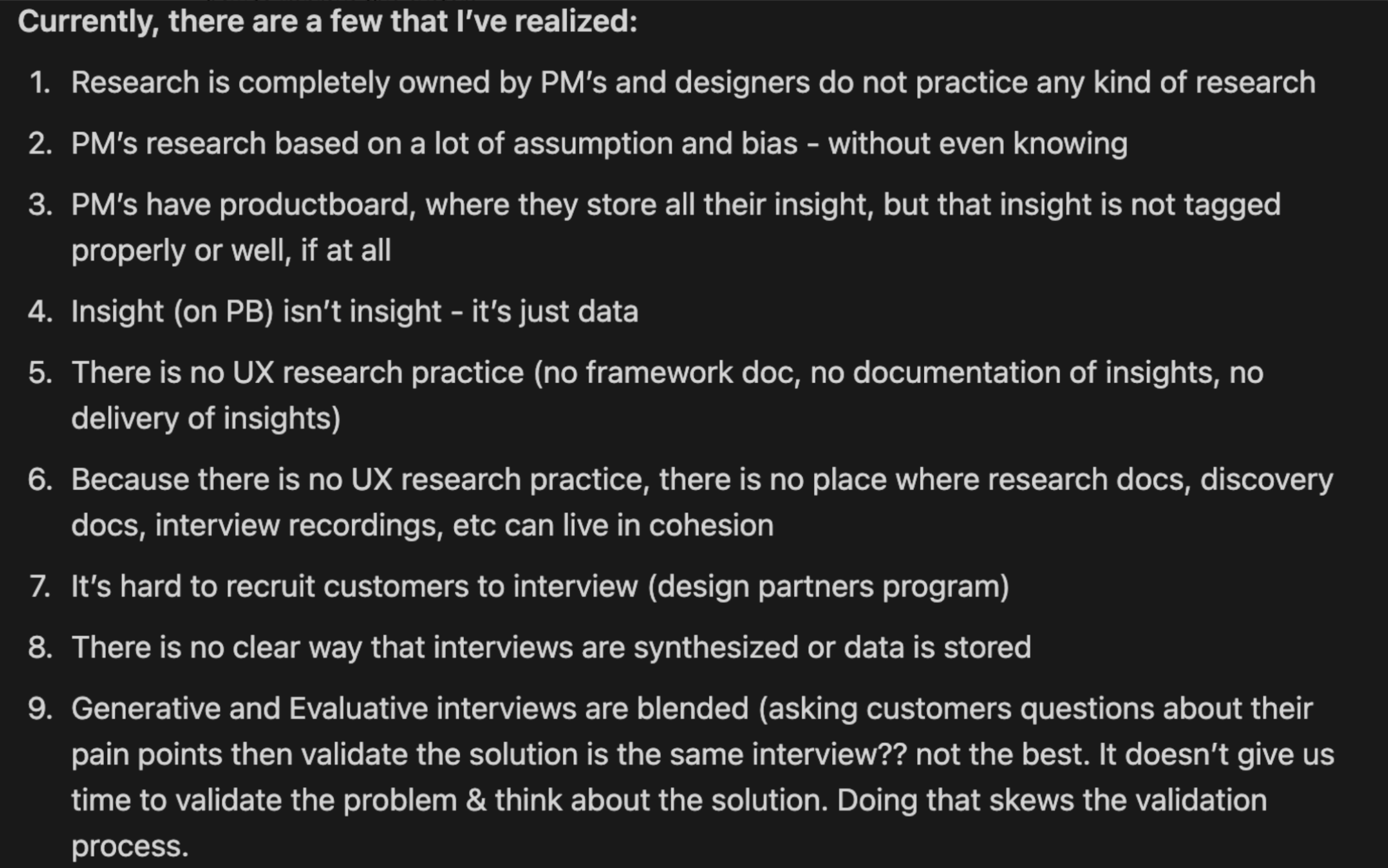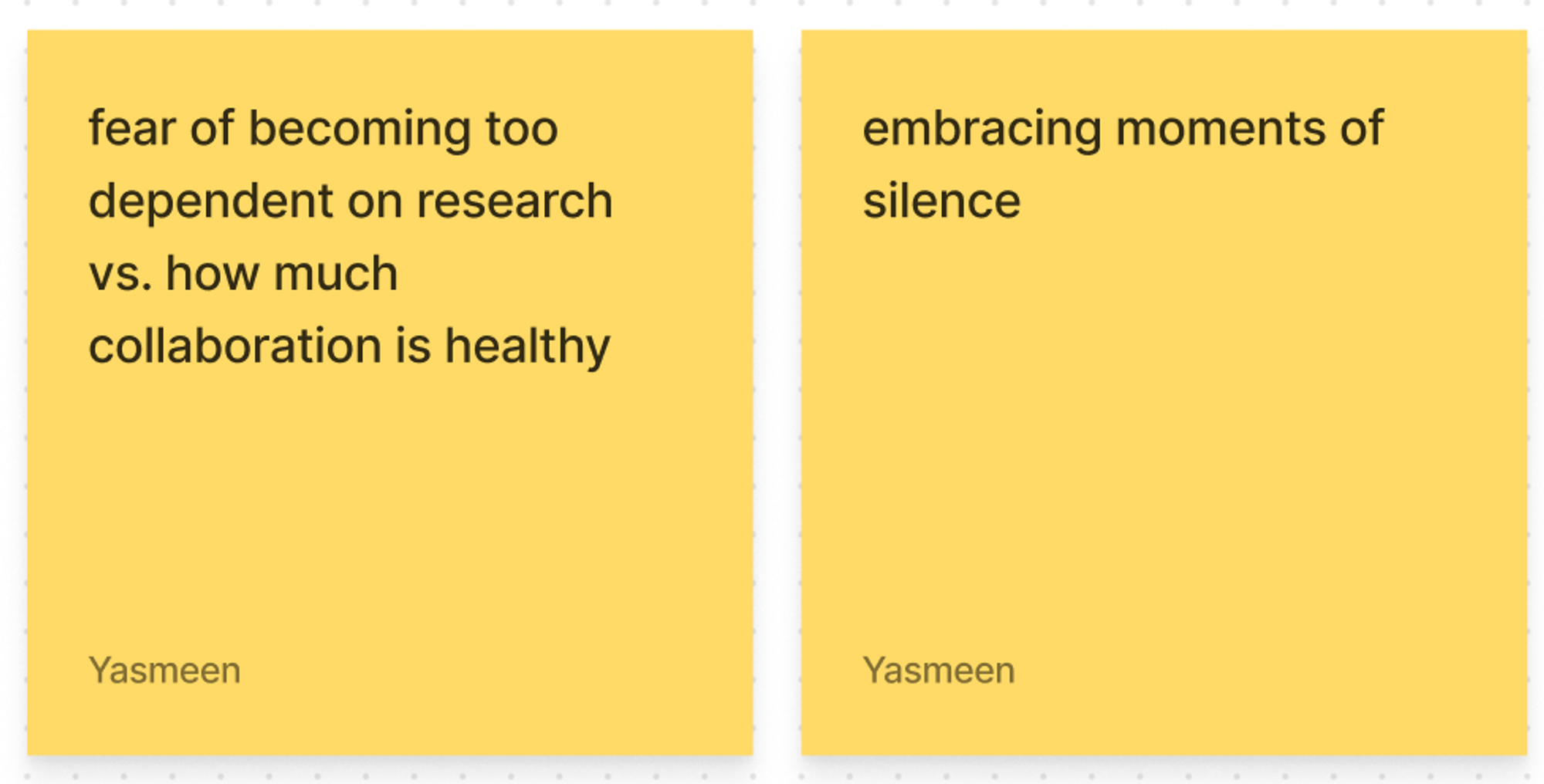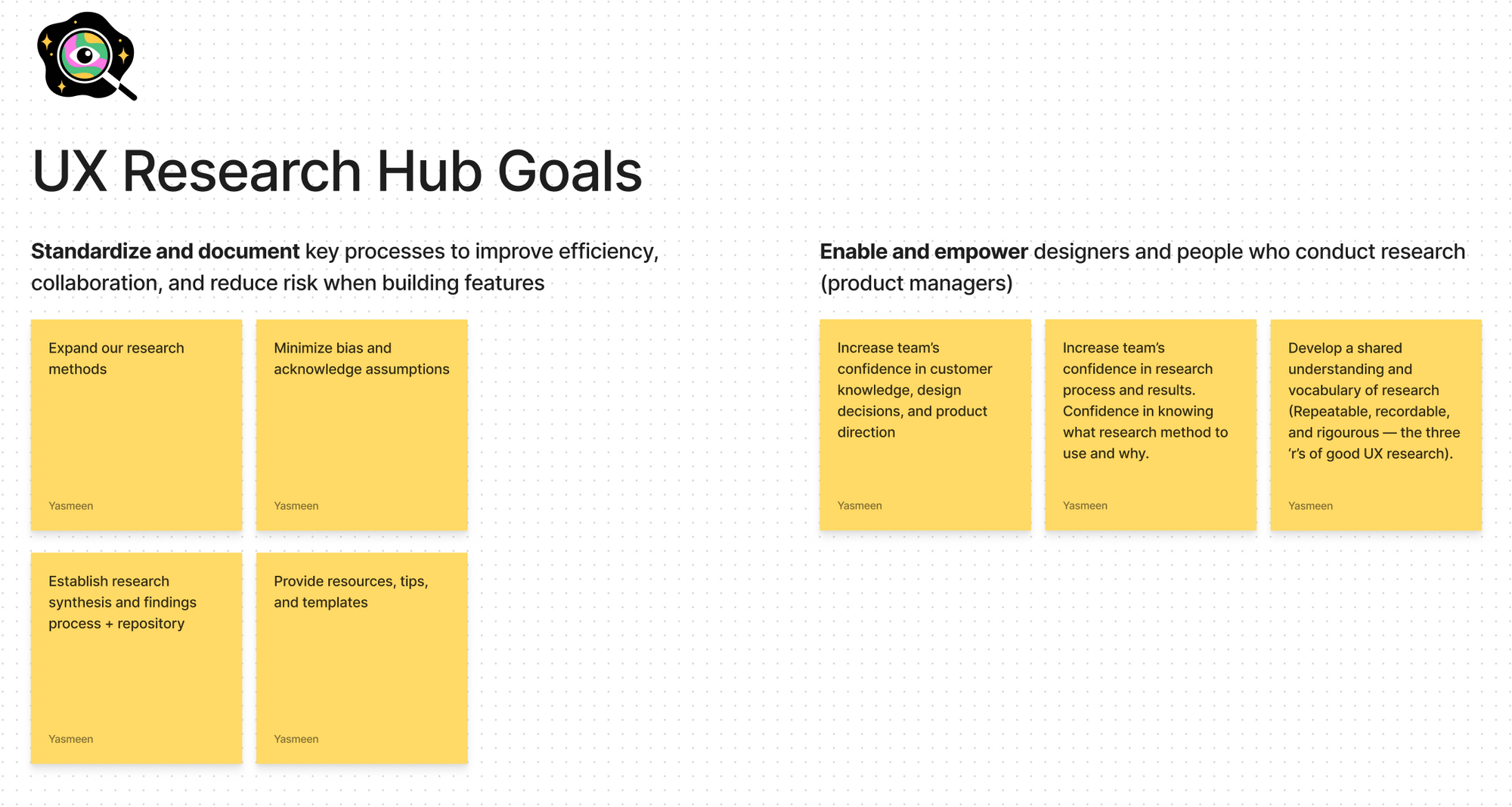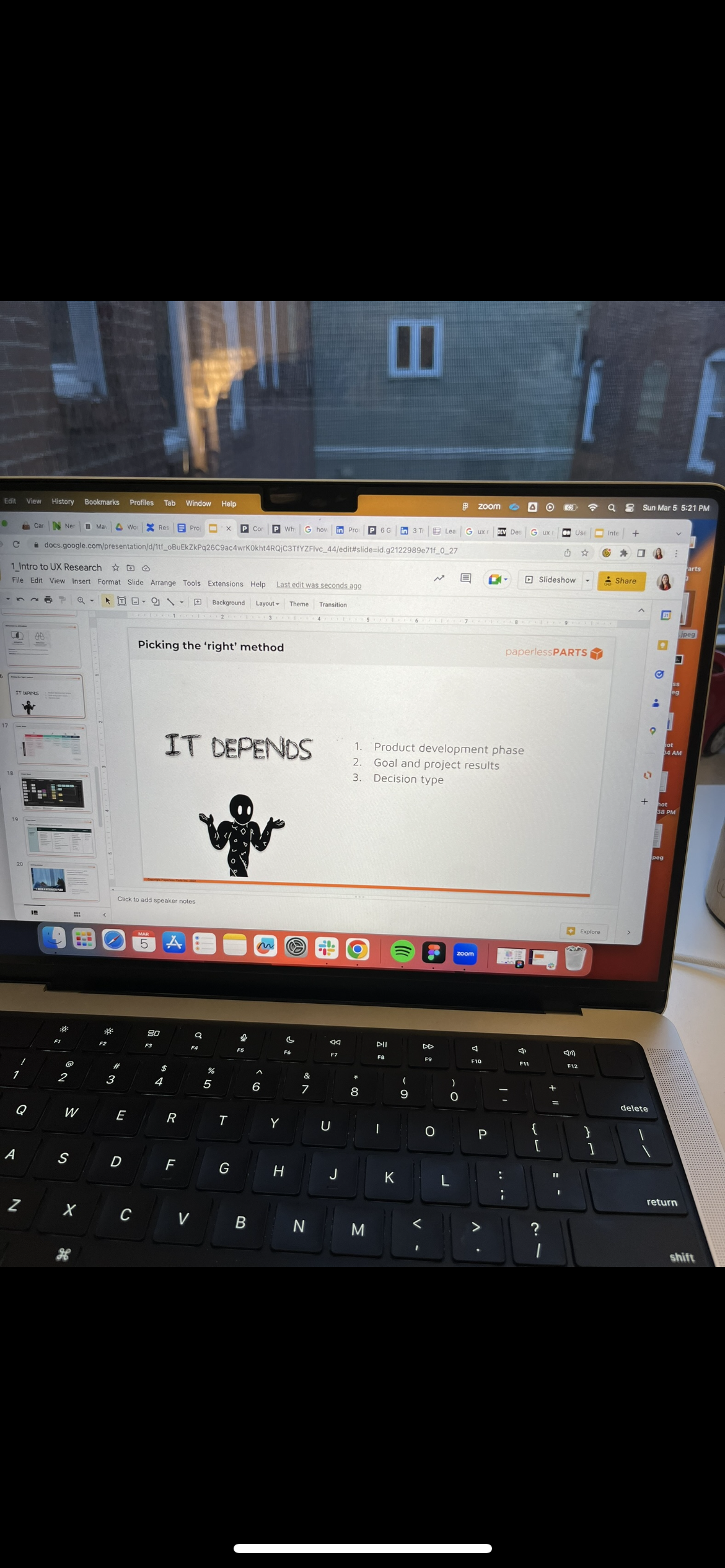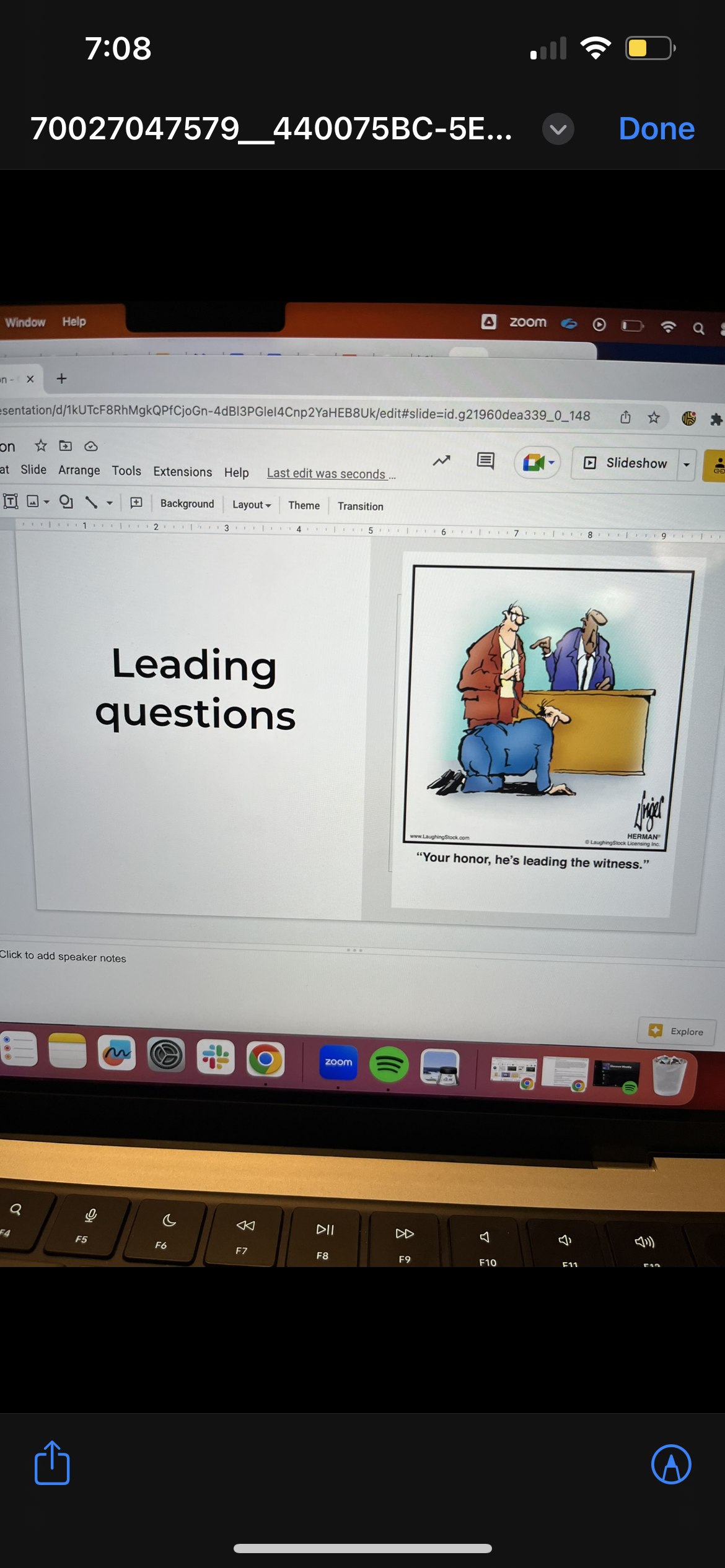Establishing a UX Research Program & Process @ Paperless Parts
🚨 How might we standardize and document key processes to improve efficiency, collaboration, and reduce risk when building features?
🚨 How might we enable and empower designers and product managers to conduct more reliable research?
Team
Yasmeen Masri
Timeline
6 months, November 2022 - May 2023
Methods
Stakeholder interviews, user journey mapping, secondary research on research practices, research templates, and building research departments.
Role
In addition to carrying out my UI/UX design tasks, I took this independent project on to establish the development of a reliable internal system to improve research capabilities and practices within Paperless Parts. This role included: identifying UX research gaps and challenges and designing an internal system to 1. standardize and document and 2. enable and empower designers and product managers.
Deliverables
Confluence documentation on 15+ research and ideation techniques (including “What, when, why, and how?” to use each technique).
UX research templates including templates for synthesis, interviewing question bank (20+ questions), interviewing question guide.
Three intensive training workshops for all designers and product managers: Intro to UX Research, Interviewing and Asking Better Questions, and Affinity Mapping & Synthesis.
Research
Stakeholder interviews with Director of Design and Director of Product Management
After I identified some assumptions, I interviewed with the Director of Design and Director of Product Management to hear their perspective on the process (asking them questions like what are the top three goals for this year? how can UX Research help in achieving these goals? what can be improved? where are the team’s weaknesses? etc). Additionally, a huge reason for these interviews was to understand stakeholder perspective, including hopes and fears.
Confluence documentation on 15+ research and ideation techniques (including “What, when, why, and how?” to use each technique).
UX research templates including templates for synthesis, interview question guide, and interview question bank (20+ questions).
Three intensive training workshops for all designers and product managers: Intro to UX Research, Interviewing and Asking Better Questions, and Affinity Mapping & Synthesis.
Office hours, every Wednesday for three months, to offer extensive and personalized support for UX research questions
Research repository that promotes knowledge sharing, collaboration, efficiency, avoids duplicating efforts, and the capitalizes on the ability to leverage past research efforts.
Survey to PM’s and designers
Later, I sent out a twelve question survey to all PM’s and designers asking them to self-evaluate (their research process, methods, tools, strengths, and weaknesses). The intention of the survey was to better customize the UX Research Hub to the needs of the team and to measure the impact of the UX Research Hub, months down the line.
Here’s what stood out to me!
Research tools and methods: Majority of team aren’t aware of the different research methods/pros/cons of each.
Bias: Majority of team acknowledge that they approach product discovery with bias
Leading questions: Majority of team struggle to understand what leading questions are and how to derive deeper insights from customers.
Resources & education: 100% of team wished they knew more about how to conduct good research (tips, tricks, and templates).
Other: When asked what would make them better researchers, team mentioned customer interview guides, question banks, bigger research toolbox, templates, roleplaying, documentation tools and strategy.
The problem gained clarity
By conducting thorough user research (interviews and surveys), I were able to gain invaluable insights into the pain points, needs, and preferences of designers and project managers. Armed with this knowledge, I tailored the UX Research Hub to cater precisely to their requirements, ensuring a seamless and engaging experience.
To prepare for launch, I carefully designed a plan, aimed at building anticipation and excitement among the department. I sent out emails informing everyone of this initiative, asked to present during our weekly R&D meetings, and sent out invites for training workshops.
For the workshop training plan, I took inspiration from IDEO U Design Thinking Certificate. The workshop/training plan was as follows:
Intro to UX Research
What is the Research Hub?
Why is this important?
Types of research methods
Pros and cons of each research method
Asking Questions and Interviewing
When to interview
Forming a research plan with research goals
Crafting research questions (do’s and don’ts)
What are leading questions & how to avoid them
Introduced the Question Bank: A compilation of over 25 open-ended questions
Affinity Mapping and Synthesis
Introducing Affinity Mapping
Role-playing and interviewing each other
Forming a Figjam board and synthesizing together
I incorporated memes and other elements of pop culture to keep my audience engaged throughout the training sessions.
Not identifying assumptions or theories, before conducting research led to a cherry-picking of data that supports existing assumptions, overlooking contradictory evidence and limiting the ability to uncover alternative perspectives or user needs.
Lack of systematic synthesis methods led to inconsistent interpretations among the team, which made it challenging to establish consensus.
Ideation
User Journey Mapping
After gaining clarity on the problem, I mapped out the product research process in a form of a user journey map and validated it with a couple of PM’s. This helped me understand the process holistically and begin identifying opportunities for each stage of the process.
Process overview
🔍 Research: Understand current research processes to identify improvements (observation, identifying assumptions, stakeholder interviews, launching survey).
🖊️ Ideation: User journey mapping current experience and identifying areas of improvement (Research templates, Confluence documentation on research and ideation techniques).
🚀 Launch: Training sessions, workshops, and office hours.
Background
I first joined Paperless Parts in October of 2022. During that time, Paperless Parts was rapidly expanding their R&D team, with a focus on building scalable systems. Paperless Parts’ UX research practice was essentially non-existent. I was brought on the team to ramp up the UX research process, build the department, and eventually lead it.
Observation and assumption identification
I initially began this project by observing the product process and reading existing documentation, which led me to a list of assumptions about the process at Paperless Parts. Coming from a research speciality and background, there were many gaps and weaknesses that I brought up to my managers about the UX Research process. It became apparent that there was a huge opportunity to improve and own this process.
Research was owned by product managers. This lack of cross-functional collaboration and information sharing lead to missed opportunities for holistic insights and a limited understanding of the user experience.
The absence of a shared repository hindered collaboration, knowledge sharing, and increased the likelihood of research duplication, ultimately impeding the ability to build upon previous research and drive informed decision-making.
Inconsistent or ambiguous tagging practices resulting in challenges when searching and retrieving specific data points, making it difficult to analyze and synthesize research findings effectively.
Inconsistent terminology and varying interpretations of research terminology hindered cross-functional understanding and alignment.
Identifying Opportunities
After identifying opportunities on the user journey map, I came come up with consolidated goals and a mission for the UX Research Hub, as well as all the different facets that will improve the quality of research.
Standardize and document
expand our research methods
minimize and acknowledge bias
provide resource, tips, and templates
establish synthesis process
How?
Launch
Enable and empower
increase team’s confidence in customer knowledge
increase team’s confidence in research process in results
develop a shared understanding and vocabulary for research
Reflection
This project has been an incredible learning experience for me. One key takeaway from this journey has been the importance of seeking feedback from project managers and designers throughout the process. By regularly iterating based on their valuable insights, I was able to fine-tune my templates and workshop approach.
Role-playing and collaboration have proven to be powerful tools for crafting compelling storytelling and enhancing audience engagement. I’ve incorporated role-playing in my third workshop and the feedback was way more positive after that one. I could sense the audience was way more engaged and excited to learn.
As I reflect on this project, I recognize that growth often lies just beyond the borders of familiarity. By embracing new challenges and opportunities, I stepped outside of my comfort zones and took the lead on defining research practice at Paperless Parts.
The combination of seeking feedback, iterating based on valuable insights, and incorporating role-playing and collaboration has shaped this project into a powerful initiative. I’m confident that these lessons learned will continue to guide me and craft me into a more compelling storyteller, presenter, and design thinking leader.


